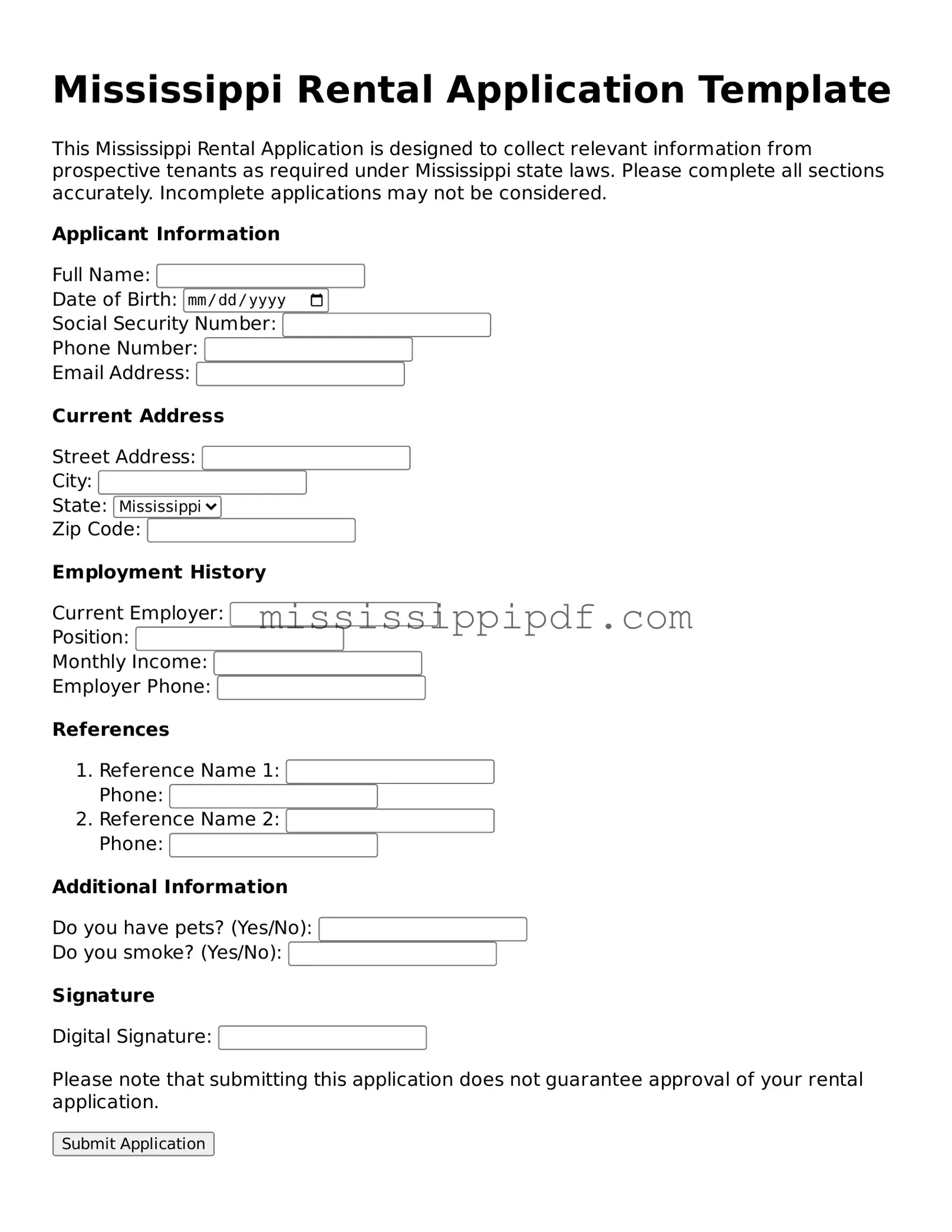The Mississippi Rental Application form shares similarities with the standard Lease Agreement. Both documents establish the terms and conditions of the rental arrangement. A Lease Agreement outlines the rights and responsibilities of both the landlord and tenant, while the Rental Application serves as a preliminary step to assess the tenant's suitability. Key details such as rental amount, duration, and property rules are common elements in both documents.
Another document comparable to the Rental Application is the Tenant Screening Form. This form is often used by landlords to gather essential information about potential tenants. Like the Rental Application, it collects personal details, employment history, and references. The primary purpose of both documents is to evaluate the applicant's reliability and ability to fulfill lease obligations.
The Background Check Authorization Form is also similar to the Rental Application. Both documents require the tenant's consent to conduct background checks. The Rental Application typically includes a section for the applicant to authorize credit and criminal checks, ensuring that landlords can make informed decisions based on the applicant's history.
The Credit Application is another document that aligns closely with the Rental Application. This form specifically focuses on assessing the financial stability of the applicant. While the Rental Application collects a broader range of information, the Credit Application zeroes in on creditworthiness, which is crucial for landlords in determining if a tenant can afford rent.
Additionally, the Employment Verification Form bears resemblance to the Rental Application. Both forms require information about the applicant's job status and income. The Employment Verification Form is often used to confirm the details provided in the Rental Application, ensuring that the tenant has a stable source of income to support their rental payments.
The Rental History Verification Form is similar as well. This document seeks to confirm the applicant's previous rental experiences. Landlords use it to gather information about the applicant's past behavior as a tenant, which can be crucial for assessing their reliability. The Rental Application may request similar information to provide a comprehensive view of the applicant's rental history.
The Guarantor Application is another document that parallels the Rental Application. In cases where a tenant may not meet certain criteria, a guarantor can step in. The Guarantor Application collects information about the individual who will back the lease, similar to how the Rental Application gathers details about the primary applicant.
For landlords looking to formalize a rental arrangement, the process begins with a strong understanding of the necessary documentation. Familiarizing yourself with the intricacies of the Residential Lease Agreement requirements is essential for ensuring compliance with California laws and protecting both parties involved in the leasing process. More details can be found on the California Residential Lease Agreement page.
The Pet Application Form is also comparable. For properties that allow pets, this document gathers specific information about the tenant’s pets. While the Rental Application focuses on the tenant's qualifications, the Pet Application assesses the suitability of the pet in relation to the property’s rules and policies.
The Move-In Checklist is another document that connects to the Rental Application process. While the Rental Application assesses tenant suitability, the Move-In Checklist is completed after acceptance. It documents the condition of the property at the time of move-in, ensuring that both parties agree on the state of the premises.
Lastly, the Lease Termination Notice can be considered similar in terms of its connection to the rental process. While the Rental Application initiates the relationship, the Lease Termination Notice formalizes the end of it. Both documents are essential in managing the rental agreement lifecycle, ensuring that both parties are aware of their rights and obligations throughout the tenancy.
